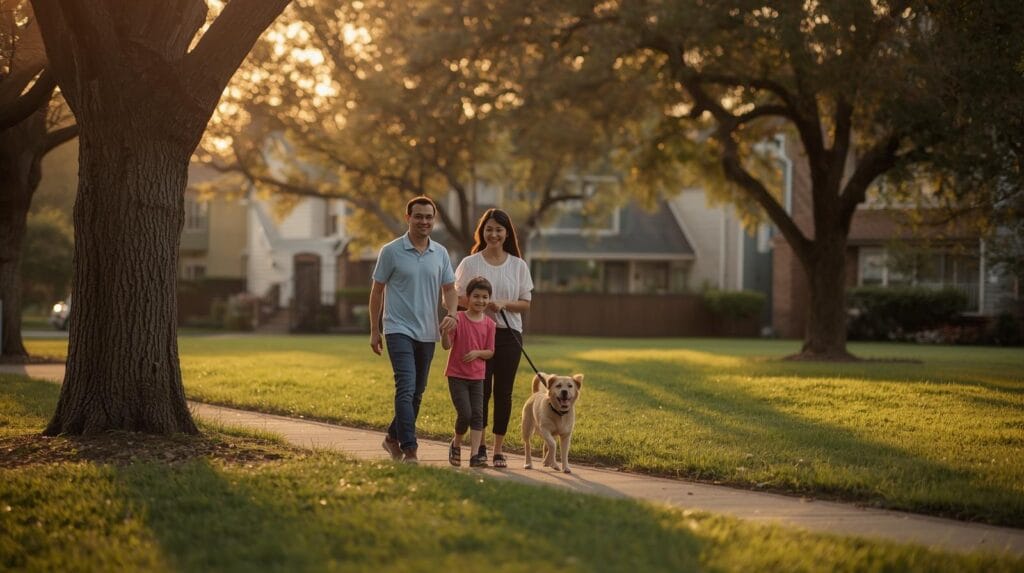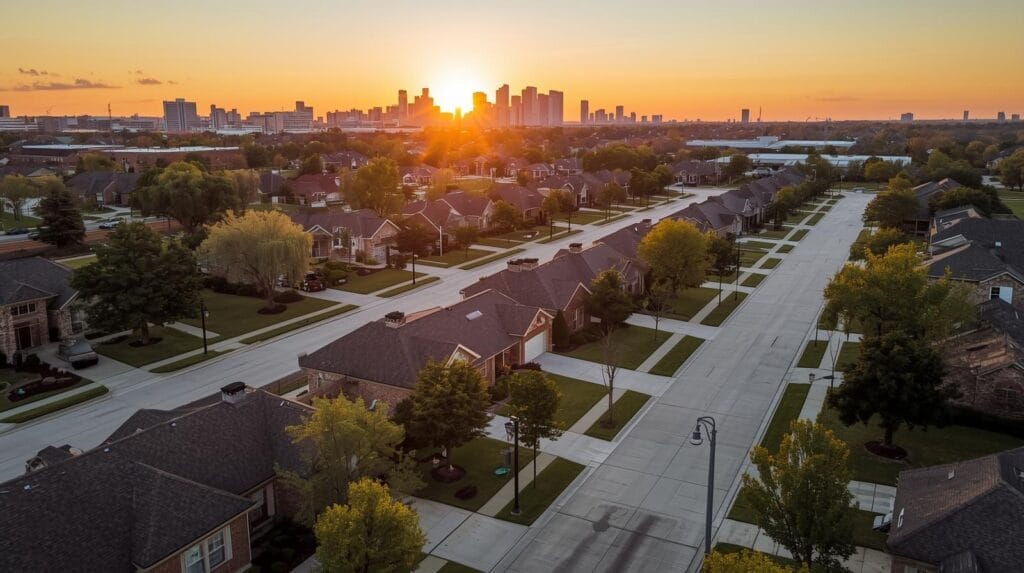If you’re thinking, “how much house can I afford in Tulsa?” you’re in the right place. I’m Deborah Green (Real Estate Agent with Real Broker LLC), here to walk you through what affordability looks like right here in the Tulsa Metro area — without the fluff, just solid insights, practical numbers, and community-based guidance.
Whether you’re relocating to the Tulsa area or moving within it, we’ll cover: your budget math, how to use a home-affordability calculator, what home prices look like by area, and local considerations that make Tulsa special. By the end you’ll feel clear about your price range and next steps.
Why “How Much House Can I Afford in Tulsa?” Matters
Buying a home is a significant decision — especially when you’re relocating or making a big move. Knowing your affordability up front helps you:
-
Shop the market confidently (rather than getting emotionally attached to homes outside budget)
-
Avoid over-stretching your finances
-
Plan for life beyond the mortgage (schools, lifestyle, community)
-
Use that knowledge to target neighborhoods that offer the best fit for your budget and desired lifestyle
In the Tulsa Metro area, affordability is a significant advantage compared with many U.S. metro markets. That said, each neighborhood and suburb varies, and your personal finances and goals matter. Let’s dig into the numbers.

Start with Your Own Budget — Home Affordability Calculator Tulsa
Before picking a price range, you’ll want to plug your numbers into a home-affordability calculator (look for one specific to Tulsa or OK). Here are the typical variables:
-
Your monthly gross income
-
Monthly debt payments (car, student loans, credit cards)
-
Down payment amount (cash you have saved)
-
Estimated interest rate (check current mortgage rates)
-
Property taxes & homeowners insurance (Tulsa County and area suburbs)
-
Other home-ownership costs (HOA, utilities, maintenance)
-
Desired monthly payment ceiling (ideally 25-30% of gross income for housing)
Here’s a quick example:
If you earn $100,000/year, carry $400/month in debt payments, have savings for a $40,000 down payment, and assume a 6 % interest rate, property tax & insurance around 1.2 %, you might safely aim for a home price of roughly $300,000-$350,000 (numbers approximate). This calculator will allow you to adjust for local tax/insurance figures and lender requirements.
Key tips when using a calculator:
-
Don’t omit the down payment and closing costs — these impact how much house you can afford.
-
Factor in property tax and homeowners’ insurance realistically. Tulsa-area taxes tend to be lower than those in many places.
-
Keep your monthly housing payment (mortgage, taxes, insurance, and HOA) at a comfortable ratio (many lenders use ~28-31% of gross income).
-
Get pre-approved for a loan early so you know your budget range with confidence.
-
Remember, affordability isn’t just the mortgage — include ongoing maintenance, utilities, and reserves for unexpected costs.

What Are Home Prices in the Tulsa Metro Area?
Let’s look at real numbers so you can map your budget to actual homes. In the Tulsa region:
-
The median home value in Tulsa Metro is around $265,000.
-
In Tulsa County, the median sale price is about $279,000 as of September 2025.
-
On average for all home types in Tulsa city, median sale price was around $255,000 in September 2025.
-
Some neighborhoods are significantly higher: e.g., in the ‘Garden District’ of Tulsa, median prices run well above $800K.
What this means:
-
If your budget is $250K-$300K, you’re in a solid segment of the market in many Tulsa neighborhoods.
-
If you have a higher budget (e.g., $400K+), many suburbs and newer developments open up.
-
If your budget is under $200K, you’ll still find options in certain areas of Tulsa city or smaller suburbs.
How Much House Can I Afford in Tulsa? Matching Budget to Area
Here’s how you might pair different budgets with typical areas and the lifestyle they offer.
| Budget Range | What You Can Expect | Typical Areas to Explore |
|---|---|---|
| $200K-$250K | Smaller newer home or larger older home, modest yard, maybe some upgrades needed | Affordable city neighborhoods, older suburbs of Tulsa |
| $250K-$350K | Comfortable 3-4 bedroom home, good yard, likely in a sought-after suburb | Suburbs like Broken Arrow, Jenks, or mid-town Tulsa |
| $350K-$550K | Newer construction or premium location, upgraded features, larger yard | East/west suburbs, newer developments |
| $550K+ | Top-tier homes, luxury finishes, large lots, premium school districts | Golf communities, lakefront, luxury suburbs |
In your relocation or move-within-Tulsa plan, think: how much lifestyle do you want (yard size, school district, commute) and how that aligns with your budget. For example, you might pay a bit more for West Tulsa vs. farther out in exchange for amenities and a shorter commute.

Local Considerations for Tulsa Homebuyers
When you’re trying to decide how much house you can afford in Tulsa, it’s not just about the numbers — local factors can make a big difference in both your monthly budget and your overall lifestyle. Here’s what to consider before narrowing your search.
School Districts & Community
If you’re buying for your family — or simply planning ahead for resale value — school districts are one of the biggest influencers on Tulsa home prices.
-
Jenks School District and Broken Arrow Public Schools are among the most sought-after, often commanding higher property values and more competition when homes hit the market.
-
Other strong performers include Bixby, Union, and Owasso districts, each known for academic excellence and active extracurricular programs.
-
Neighborhoods within these districts often offer more community amenities, such as parks, trails, and youth sports — a key consideration if you’re weighing lifestyle along with price.
If resale is on your radar, investing in a home within a top-rated school district can provide long-term value and market stability, even if you don’t have school-aged children.
Commute and Location
One of Tulsa’s most significant advantages compared to larger cities is its light traffic and manageable commute times—still, location matters.
-
Living closer to major routes like Highway 169, the Creek Turnpike, or the Broken Arrow Expressway can save time and gas, primarily if you work downtown or in the South Tulsa business corridor.
-
Communities like Jenks, Bixby, and Broken Arrow strike a good balance between suburban tranquility and convenient access to major employers, retail, and entertainment.
-
If you’re open to a slightly longer drive, expanding your search into Sand Springs, Coweta, or Claremore may stretch your budget further while offering more land or larger homes.
Remember: a 15-minute difference in commute time could translate into tens of thousands of dollars in purchasing power, depending on where you buy.
Property Taxes & Insurance
Oklahoma’s property taxes are lower than the national average, and that’s excellent news for homebuyers.
In Tulsa County, the median home price is around $279,000, and property taxes typically range between 0.8% and 1.2% of assessed value — much lower than comparable homes in Texas or Colorado.
Insurance rates can vary based on location, age of the home, and roof type, especially since Oklahoma is prone to severe weather. Newer builds with impact-resistant roofs and updated electrical systems often qualify for lower insurance premiums.
Pro tip: before making an offer, ask your lender or insurance agent for a local estimate of both property taxes and homeowner’s insurance so you can better gauge your monthly payment.
Home Condition vs. Age
Tulsa’s housing stock is diverse — from 1920s bungalows near Maple Ridge to brand-new construction in South Tulsa or Bixby.
-
Older homes often come with charm and larger lots but may need updates such as new HVAC systems, roofs, or energy-efficient windows.
-
Newer homes, especially those built after 2015, typically include modern layouts, lower maintenance, and energy-efficient materials, though they command a higher price per square foot.
When comparing two homes with similar prices, consider not just the purchase cost, but the total cost of ownership over the next five years.
Market Inventory & Competition
The Tulsa market remains competitive, with homes often selling within a few weeks of listing.
The median days on market citywide is about 22 days, and homes priced under $400,000 tend to move even faster.
If you’re a serious buyer, it’s essential to:
-
Get pre-approved before touring homes.
-
Set alerts for new listings in your preferred areas.
-
Be prepared to make an offer quickly if you find “the one.”
In this market, hesitation can mean losing out — especially in neighborhoods with top schools or limited inventory.
Relocation from Out-of-State
Tulsa has become increasingly popular among remote workers and families relocating from high-cost states like California, Texas, and Colorado — and for good reason.
When moving from out of state, factor in:
-
Moving expenses and temporary housing if you’re not purchasing immediately.
-
Utility costs are generally lower in Tulsa than the national average.
-
Community integration, such as joining local Facebook groups, exploring nearby farmers’ markets, or visiting the Gathering Place — a 100-acre riverside park that embodies Tulsa’s community spirit.
-
Lifestyle differences, like Tulsa’s slower pace, friendly atmosphere, and strong sense of local pride.
The good news? Most new residents find they can afford a larger, newer home in Tulsa than they could in their previous market — often while spending less overall.
Step-by-Step: A Simple Affordability Action Plan for Tulsa
-
Gather your financial data: income, debts, savings, down-payment amount, and target monthly housing payment.
-
Use a home affordability calculator specific to Oklahoma/Tulsa, plugging in your numbers with conservative assumptions for interest rate, taxes, and insurance.
-
Choose a realistic home-price range based on your calculator results and lifestyle goals.
-
Research neighborhoods that fit your budget and desired lifestyle. For example, if your budget is $300K, look at suburbs like Broken Arrow or middle-tier Tulsa neighborhoods.
-
Visit the area (virtually or in person) and review commute, schools, amenities, and community vibe.
-
Get pre-approved for a mortgage, so you know your exact price range and can act when you find the right home.
-
Work with a local real-estate agent (that’s me!) to set alerts, review listings, craft a strategy, and submit offers when you’re ready.
-
Leave buffer room in your budget for closing costs, maintenance, HOA fees, and home-ownership costs beyond the mortgage.
Why Work with a Local Tulsa Agent?
As a community-focused agent, I bring:
-
Local insights into micro-markets, school zones, growth corridors, and lifestyle fit.
-
Knowledge of how the Tulsa market moves: competition, days-on-market, and negotiation strategy.
-
Access to listings and neighborhoods before they become heavily marketed.
-
A friendly, non-pushy approach: you’ll get guidance, not sales pressure.
When you decide how much house you can afford in Tulsa, you’ll benefit from someone who knows Tulsa, not just national stats.
Internal Resources for Your Next Steps
Want to dive deeper? Check out these neighborhood guides:
-
Discover a great suburb: Seven Oaks South Neighborhood Guide
-
Explore other blog posts or neighborhood walks
These will help you tie your budget to real-world communities.
Final Thoughts & Your Move-Forward Plan
So, to wrap up: knowing how much house you can afford in Tulsa isn’t just about a number. It’s about aligning your life goals—budget, community, commute, school, lifestyle—with what the Tulsa market offers. Use a calculator, review real numbers ($200k-$300k is solid in many Tulsa areas, higher budgets bring premium neighborhoods), and remember: being clear on your budget = confidence when you see “the one.”
If you’re ready, I’d love to chat. We’ll review your numbers, walk through neighborhoods, and create a personalized plan so you’re ready when the right home appears. Reach out when you’re ready: DebSellsTulsa is here for you.
Ready to explore homes that fit your budget and lifestyle? Contact me today and let’s map out your Tulsa home-buying journey together.
“How much house can I afford in Tulsa?” — Let’s turn that question into your keys in hand.
Frequently Asked Questions About Tulsa Home Affordability
How do I calculate how much house I can afford in Tulsa?
To figure out how much house you can afford in the Tulsa area, start by looking at your income, current monthly debts, and how much you’ve saved for a down payment. Then use a home affordability calculator Tulsa to plug in your numbers along with today’s mortgage rates, estimated property taxes, and insurance costs. A good rule of thumb is to keep your total monthly housing expenses under 25–30% of your gross monthly income.
What is the typical home price in the Tulsa Metro area right now?
As of late 2025, the average home price in Tulsa is around $255,000, while Tulsa County’s average sits near $279,000. Many desirable suburbs such as Broken Arrow, Jenks, and Bixby fall in the $250k–$350range, though newer or luxury neighborhoods can exceed $450K.
What neighborhoods should I consider in Tulsa based on my budget?
-
$200k–$250k: Older but charming homes in established Tulsa neighborhoods or smaller suburbs.
-
$250k–$350k: Comfortable family homes in top suburban areas like Broken Arrow, Jenks, or midtown Tulsa.
-
$350k–$550k: Newer construction or upgraded homes in planned communities.
-
$550k+: Luxury or golf-course communities with larger lots and high-end finishes.

